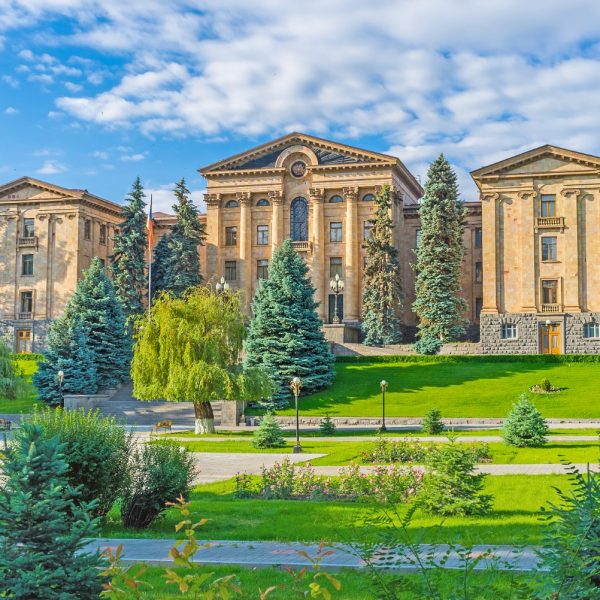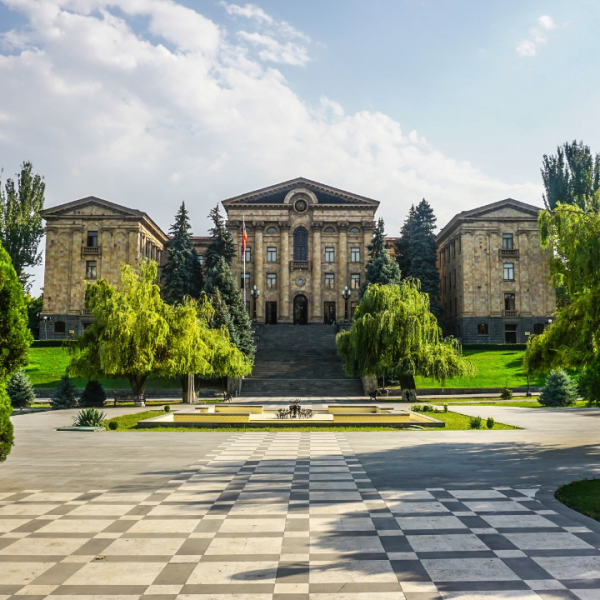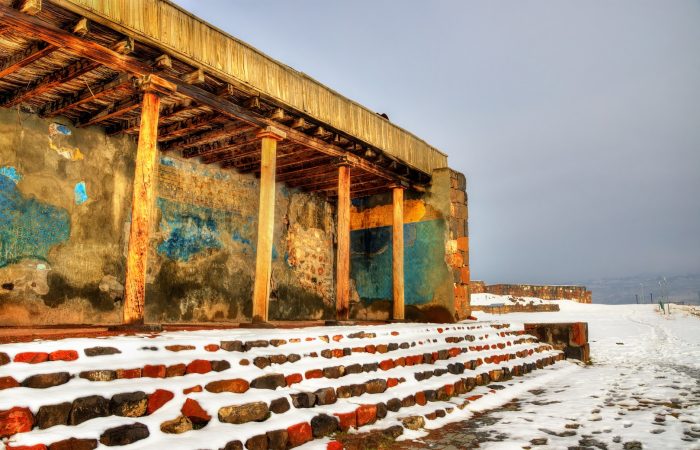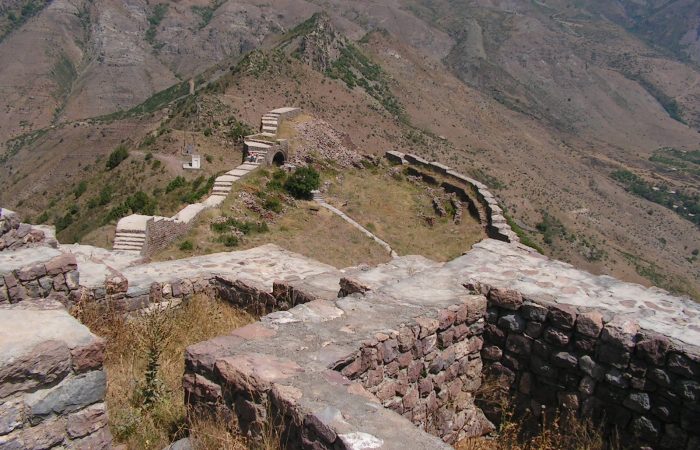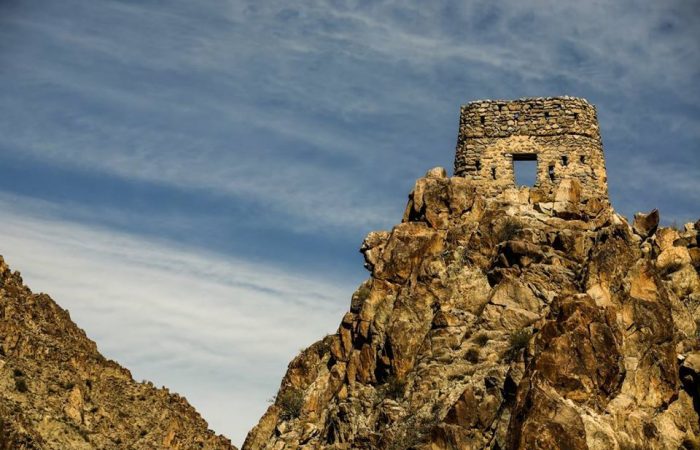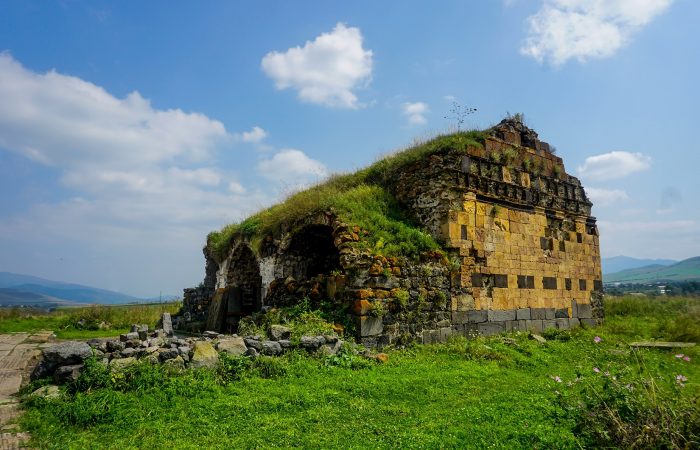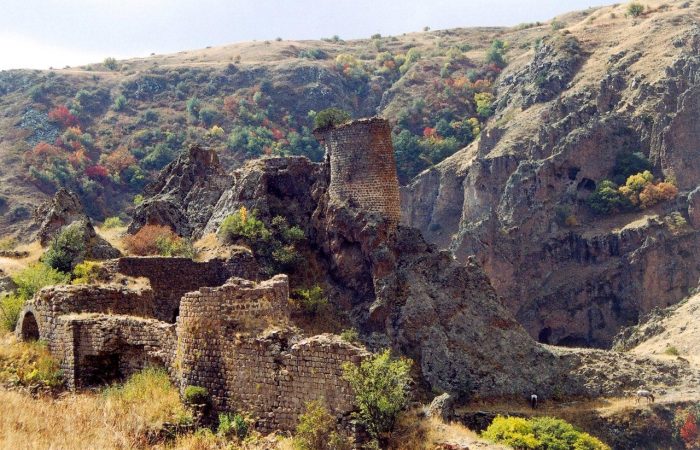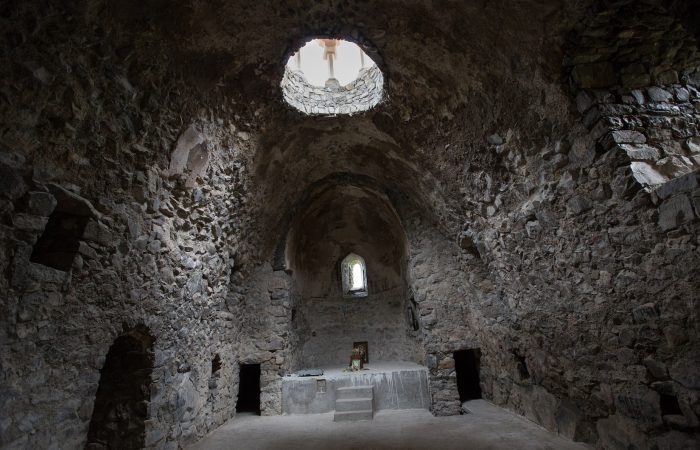National Assembly: Brief Sequence of Events
The National Assembly building was designed in 1947 for the Central Committee of the Communist Party of Armenia. The construction began on 1948 and was completed two years later, in 1950. The chief architect was Mark Grigoryan, who was the chief architect of Yerevan back then and the Director of the Armenian Industrial Institute.
On May 1, the RA (Republic of Armenia) Council of the Ministers passed the 314 Decision, which implied that the building that was formerly used by the Central Committee of the Communist Party of Armenia should be assigned to the Supreme Council of the Republic of Armenia. The transfer to the building was made in May of the same year.
National Assembly is Built on a Cemetery: Myth or Reality?
The oldest cemetery of Yerevan, Kozern is located on the left part of the center of the Baghramyan Avenue. The cemetery is named so after renowned 9th century scientist Hovhannes Kozern, who is more known as Hovhannes Vardapet. Kozern means boy. The scientist is considered to be the first person to be buried in the cemetery, which presently bears his name. Afterward, Vardapet Melikset Vzhanetsi and Catholicos Movses Syunetsi were also buried there. With time moving on, a nice chapel, the “Chapel of Kozern” was built in the cemetery.
The period between the 1920s and the 1940s is more known as the reconstruction period of the Yerevan city. In the thirties the cemetery was already buried in waste materials, though some authors say that back in those years funerals were still being organized there. And it is exactly on this cemetery that people believe the building of the National Assembly was constructed. While many people will choose to stick to this assumption, the reality is different. The National Assembly was not built on a cemetery but a fertile garden. This cemetery was located to the west and north-west of the Demirchyan Street.
National Assembly Building Construction
As already said, the construction of the building started in 1948 on one of the heights of the Baghramyan Avenue. Presently, it’s hard to talk about the Avenue without thinking of the building, which beyond a shadow of doubt adds to the overall significance and the beauty of the avenue. The monumental building of the National Assembly is located 100-200 meters away from Baghramyan Avenue. The environment and the building are in a complete harmony with each other – this is one thing typical of Grigoryan’s work style.
National Assembly Building Design, Interior, Exterior
The building is divided into three parts; central and the two side volumes. The central part includes the expanded vestibule, the main staircase and the sitting hall. The two side volumes feature the wide corridor on two sides of which the working rooms are located.
It’s made of light orange tufa. The flowerbeds and the metal fence create the feel of solemnity. The entrance is made of marble. The corridors are not only wide but also rather bright. The building includes side and central stairs and also an elevator. Of special interest are the red and green main and side halls and the gilded hall.
The interior features high quality wood and both natural and artificial marble.
The National Assembly Building was so unique in its kind that in 1951 the architect of the building was awarded the State Prize of the USSR.
National Assembly Subsidiary Building
The construction of the subsidiary building started in 2006 and was completed in 2009. The interior of this building also comes with high quality wood and both natural and artificial wood. The architect was M. Rustamyan. The building is made of concrete and only.
Controversies regarding the Park
There are cast-iron railings around the National Assembly Park, which restrict the access to the park. The park is truly alluring. As they say, the forbidden fruit is the sweetest, in this sense, despite the fact there are many beautiful parks in Yerevan that are definitely worth a visit and provide great opportunities for a good picnic, people want this park to become a public park.
The green space environment is, however, the integral part of the overall architectural ensemble, which means that the park completes the building, and the building completes the park. Accordingly, without the park the building will appear bare, with something missing to be complete. The park-related issue is considered partly resolved – upon the initiative of the National Assembly President certain events are being organized there during which the doors are open for anyone and everyone.
Almost all countries have at least one government building, which truly stands out with its design, architectural solutions and the overall appearance. The National Assembly building is one such building in Armenia. Located on a comparatively low hill, it still is seen for the passers in all its beauty. Even the broad staircase leading to the main entrance arouses interest and admiration among people.
Location
National Assembly of Armenia is located on 19, Marshal Baghramyan Avenue. Nearby places are Cascade, Matenadaran and the Opera house.

